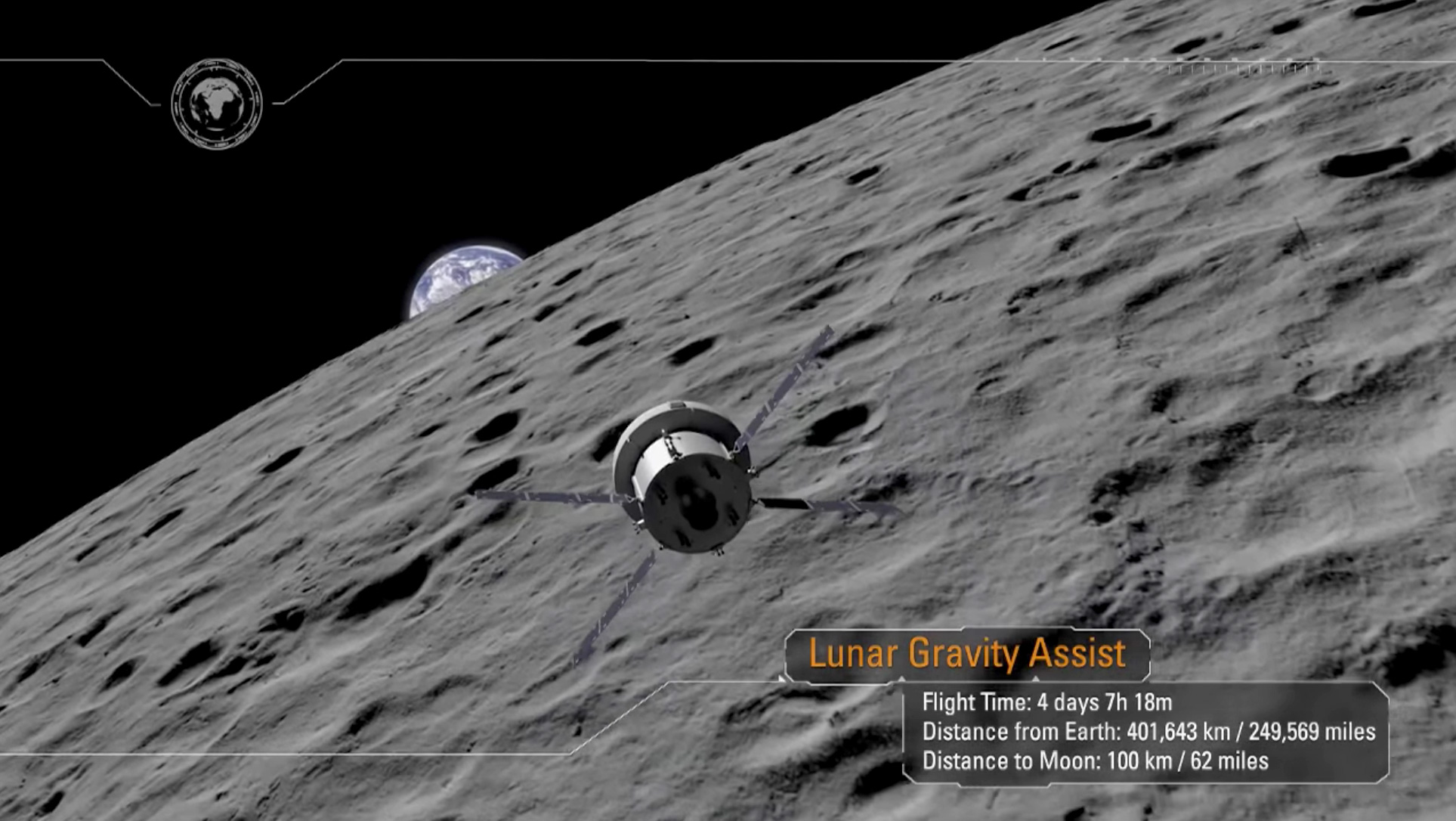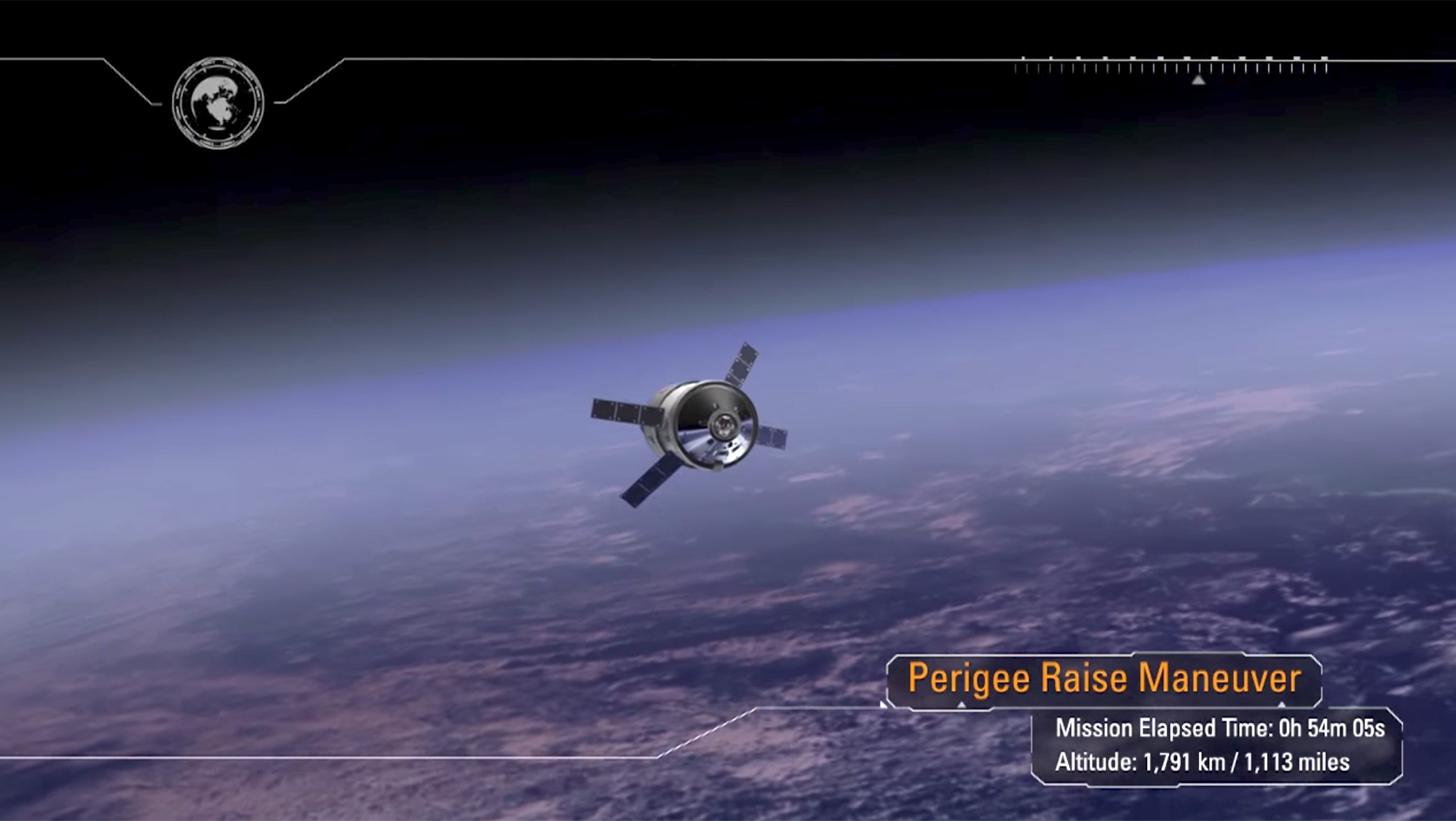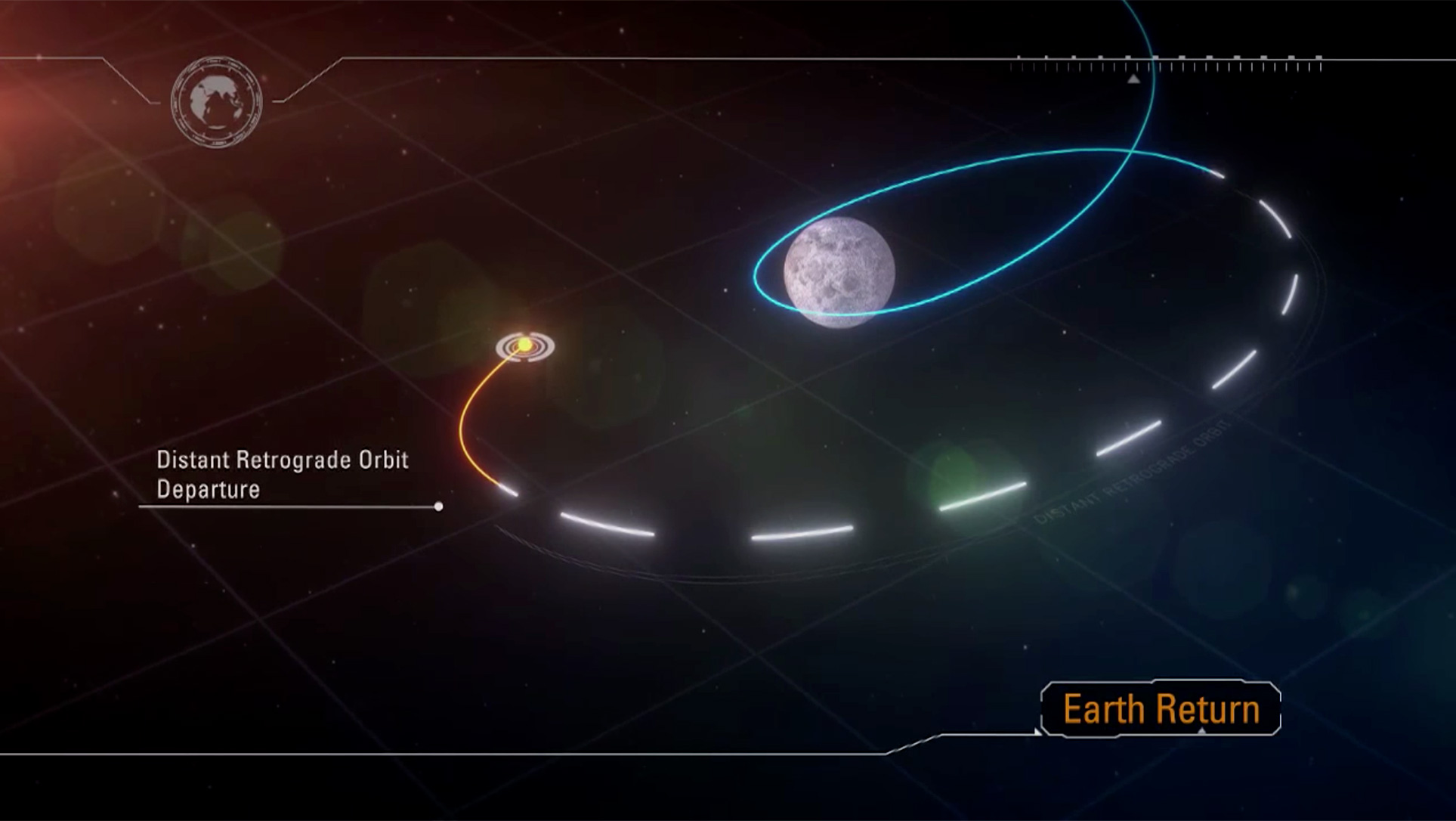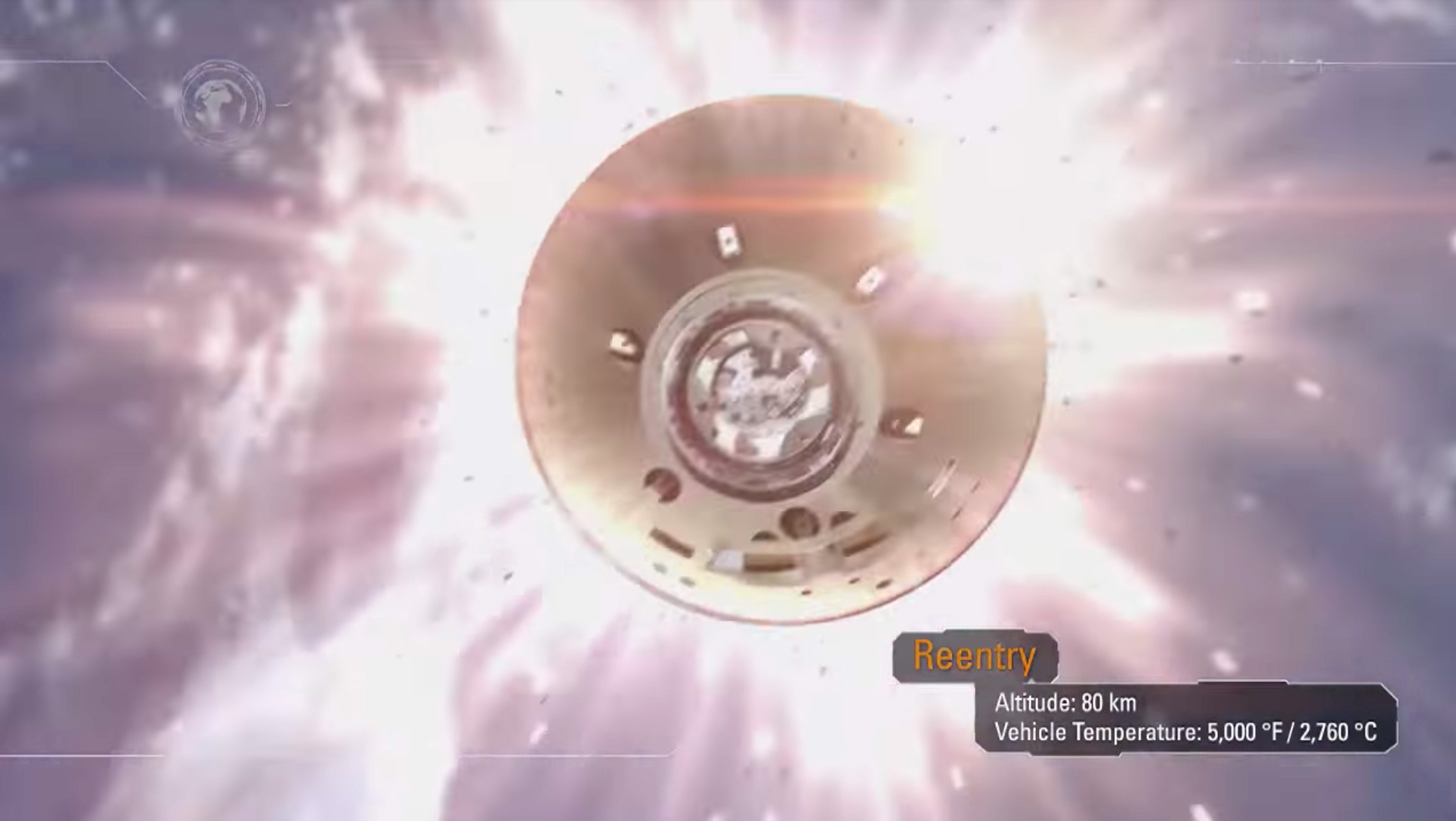NASA's Exploration Mission 1: A Step-by-Step Return to the Moon in Pictures
Returning to the Moon
NASA is getting ready to send humans back to the moon again. The agency — tasked by the Trump administration to land there — is preparing for an uncrewed test of its spacecraft out past low Earth orbit, called Exploration Mission 1 (EM-1). The mission is slated for 2019 and will test both the Orion spacecraft and the Space Launch System rocket that will bring it into space.
NASA recently released a video showing planned highlights of the 25.5-day mission, where it outlined all of the steps of the rollout, launch and landing. The mission profile looks similar to the missions that Apollo astronauts performed in the 1960s and 1970s, but with a key difference: Orion's lunar orbit will bring it farther into deep space than any other crew-capable spacecraft. Here are the details.
Rollout
As EM-1's launch date approaches, the 32-story Space Launch System — with the Orion spacecraft perched on top — will begin its rollout from Kennedy Space Center's Vehicle Assembly Building, the same location in which the Apollo rockets and space shuttles were prepared for launch.
On top of a crawler, the rocket and spacecraft will roll along a 4-mile (6.5 kilometers) crawlway at a top speed of 1 mph (1.6 km/h). When they reach the launchpad, the rocket and spacecraft will climb a ramp over the flame trench. Then, the rocket will be lowered onto the pad, and the crawler will roll away.
Launchpad checks
Engineers will spend several days making sure the rocket is ready for launch. Final safety checks will be performed, including a test to ensure that the spacecraft is cleared to leave Earth. Work crews can gain access to the spacecraft through a crew access arm, located a dizzying 300 feet (90 meters) above the ground.
One of the final steps involves loading cryogenic (very low-temperature) fuels onto the rocket to give it the required boost to leave Earth, and prepare the spacecraft for its ultimate destination: the moon.
Liftoff
Shortly before liftoff, service lines to the rocket will be severed by retracting umbilical plates, some of which are mounted on arms the size of tractor trailers. The core stage engines also will be prepared ("thermally conditioned" is how NASA puts it) for the burst of cryogenic fuel needed to power the rocket upon ignition.
At 15 seconds before liftoff (T-15 seconds), water will be turned on to suppress the sound and ensure vibrations do not disturb the launch. At ignition — T-0 seconds — fire from the rocket will flood a trench below. When the rocket starts moving a few milliseconds later, all the umbilical arms will retract. The rocket will climb past its launch tower in just a few seconds.
At liftoff, the vehicle will produce roughly 8.8 million lbs. (4 million kilograms) of thrust to counteract the 6-million-lb. (2.7 million kg) weight of the launch stack.
Leaving low Earth orbit
The rocket will reach its maximum dynamic pressure — the moment at which the atmosphere exerts its maximum force on the rocket — just 90 seconds into the mission. It will jettison its solid propellant boosters after 2 minutes, then let go of its service module fairings at 3 minutes to lighten the load and make sure Orion's solar arrays are exposed. Then, it will throw away the launch abort system at 3 minutes and 40 seconds after launch.
The engines will shut down when the rocket reaches the right speed, allowing the core stage to separate. Then, an interim propulsion stage powered by fuel cooled to very low temperatures, along with the Orion spacecraft, will orbit Earth and get ready for moon operations. Orion will deploy its solar arrays, and the propulsion stage will change the spacecraft's orbit, raising the point at which it'd make its closest approach to Earth (called perigee).
When that is finished, Orion will receive the all-clear for its 20-minute-long trans-lunar injection (TLI) burn — the engine fire that will bring it coasting to the moon.
Coast phase
It will take about four days to get to the moon, but first, the spacecraft will still have a few milestones to reach. About 1.5 hours after launch — when TLI is finished — Orion will separate from the propulsion stage. Then, it will have to pass through all the satellites and satellite debris encircling Earth, as well as the Van Allen radiation belts.
After it passes the belts, Orion will be in deep space. The spacecraft will remain in communication with Earth to make any necessary trajectory adjustments as it approaches the moon.
Lunar entry and orbits
When Orion gets close to the moon, it will perform a lunar-gravity-assist maneuver to enter orbit. This means that the spacecraft will turn on its engine to slow Orion down and let it be "captured" by the moon's gravity.
Orion will pass over the moon with a closest approach of just 62 miles (100 kilometers). But it will be in a highly elliptical orbit,called a distant retrograde orbit,that will bring it farther from Earth than any other crew-capable spacecraft. Its maximum distance from Earth will be 270,000 miles (435,000 kilometers) — — about 1,000 times farther than the International Space Station is from Earth. The spacecraft will work in this orbit for about a week.
Breaking space news, the latest updates on rocket launches, skywatching events and more!
Return
While Orion is still at the moon, recovery teams at Naval Base San Diego will get ready for Orion's eventual splashdown in the Pacific Ocean. Meanwhile, controllers on Earth will fire the spacecraft's engines again to speed up Orion, allowing it to break free of lunar orbit and coast home — a journey that will take four days.
Along the way, Orion will keep its back end pointed toward the sun to maximize cooling. Its trajectory may be adjusted to make sure that it hits Earth's atmosphere at just the right angle.
Re-entry
When Orion gets close to Earth, it will jettison the service module that held most of its crucial components for the mission. Controllers will orient Orion's heat shield in the direction of travel to get it ready for re-entry, which starts at about 400,000 feet (122,000 m) above the Earth.
The spacecraft will slam into the atmosphere at 24,500 mph (39,500 km/h) and decelerate at up to nine times the force of gravity. Outside, temperatures surrounding the spacecraft will soar to close to 5,000 degrees Fahrenheit (roughly 2,800 degrees Celsius), but it will be protected by the heat shield.
Splashdown
Once the spacecraft gets through most of Earth's atmosphere, it will pass through the sound barrier; the recovery team in the Pacific will hear it when Orion emits a sonic boom. The spacecraft will jettison a protective thermal cover and deploy drogues, then parachutes, to slow down. During the last phase, Orion will pop out three main parachutes to prepare for splashdown. In 20 minutes, the spacecraft will slow from 32 times the speed of sound (Mach 32) to 0.
After reaching the ground, Orion will stay powered on while Navy divers approach it from a nearby recovery ship, using small boats. The divers will attach tending lines and a towline, and then tow the ship into the recovery ship's well deck. Once the ship is safely inside, controllers will close the gate and drain the deck, completing Orion's 25.5-day mission.

Elizabeth Howell (she/her), Ph.D., was a staff writer in the spaceflight channel between 2022 and 2024 specializing in Canadian space news. She was contributing writer for Space.com for 10 years from 2012 to 2024. Elizabeth's reporting includes multiple exclusives with the White House, leading world coverage about a lost-and-found space tomato on the International Space Station, witnessing five human spaceflight launches on two continents, flying parabolic, working inside a spacesuit, and participating in a simulated Mars mission. Her latest book, "Why Am I Taller?" (ECW Press, 2022) is co-written with astronaut Dave Williams.









